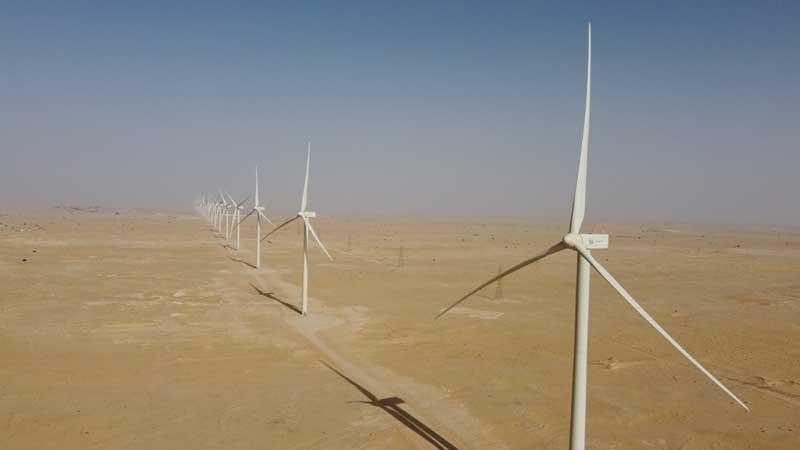Mauritania, a poor nation but blessed with abundant sunlight and vast stretches of coastline, is poised to become a beacon of renewable energy innovation. With a clear commitment to sustainable development and a growing energy demand, Mauritania is embarking on an ambitious journey to transform its energy landscape, harnessing the power of wind, solar, and green hydrogen to power its future. According to the new generation master plan, Mauritania should generate 60 to 75% of its energy mix through renewable sources by 2030 taking advantage of hydropower, sun and wind energy sources, contributing to Mauritania's energy independence and reducing its reliance on fossil fuels.
Wind Power: Harnessing the Power of the Atlantic
Mauritania's long coastline and exposed Atlantic winds present a golden opportunity for wind energy development. The country boasts some of the highest wind speeds in Africa, with average wind speeds of over 10 meters per second in coastal areas. Winds are also quite stable throughout the day and the year, which contribute to a much higher charge factor than seen elsewhere or even compared to sun power. This exceptional wind resource has the potential to generate significant amounts of clean electricity and can be coupled with sun power to provide for more stability. Wind power plants have been operated for several years in Nouakchott while the 100 MW Boulenouar plant was inaugurated in 2022. Other projects are being prepared.
Solar Energy: Lighting Up the Desert
Mauritania's vast desert regions are bathed in abundant sunlight, offering a vast untapped source of solar energy. With an average generation of 1400-1800 KWh/kW for PV projects, Mauritania has the potential to generate a significant portion of its electricity needs through solar power. Solar energy can not only provide clean electricity to its growing population but also serve as a valuable source of export revenue notably to Mali which currently stands behind for its power generation plans and experiences severe difficulties to raise finance.
Green Hydrogen: A Fuel for the Future
Mauritania's vision extends beyond solar and wind power to encompass the development of green hydrogen, a clean and versatile energy carrier with the potential to revolutionize transportation, industry, and power generation. By harnessing solar and wind energy to produce green hydrogen, Mauritania can position itself as a major player in the global green hydrogen economy. Several projects are already undertaken with global majors such as Total or BP for a total of several dozen GW and will require billion euros investments. While not all of these projects will come to fruition, they could transform Mauritania into a green energy hub. In addition, the MoU signed with the developers include an obligation to inject free of charge into the national grid 5% of the power generated.
Addressing Challenges and Fostering Growth
While Mauritania's renewable energy ambitions are promising, there are challenges that need to be addressed to realize its full potential. Developing the necessary infrastructure, attracting investment, and building local expertise will be crucial to unlocking the country's renewable energy potential. In this respect, political stability, regulatory reform and strengthening the attractiveness of the country for foreign investment will be key. Significant efforts have been undertaken with the support of the international community such as the new energy law and the current restructuring of the public utility SOMELEC.
Strengthening the grid
The most stringent condition to development consists in addressing the limitations of the current grid which requires substantial development and repair to answer the present and future needs. In this perspective, the African Development Bank has approved in December 2023 the financing of a new transmission line crossing the country from West to East from Nouakchott to Nema with an interconnection with Mali over a total 1373 km length. The project will also include 3 solar power plants of 50 MW each (including 35 MW batteries) and rural electrification along the line for 100 000 families. Through this new line, Mauritania will be able to export power to Mali and to West Africa power pool (WAPP) countries as well as benefiting from its full quota from the OMVS (Senegal river management organization) hydropower plants, as the existing transmission line from the hydropower plants is already saturated. The remaining part of the financing should be approved by international donors in 2024.
A Glimpse into the Future
Mauritania's renewable energy ambitions are not mere aspirations; they represent a strategic shift towards a sustainable and prosperous future. By harnessing the power of its natural resources, Mauritania is on track to become a pioneer in the global renewable energy landscape, setting an example for other developing countries seeking to transition to clean energy.
